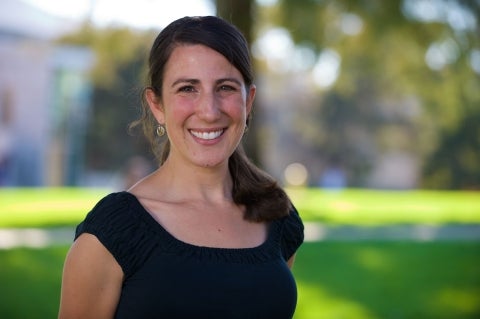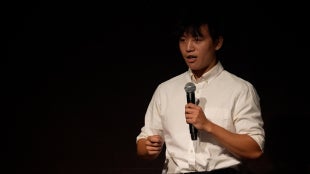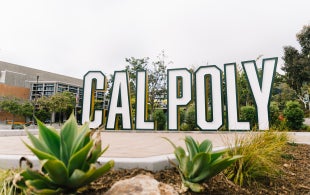Study on Mothers’ Mobile Device Use and Infant Development During First-Year Postpartum Receives $2.7M Grant
Contact: Nick Wilson
805-235-8008; nwilso28@calpoly.edu
SAN LUIS OBISPO — A $2.7 million grant-funded study — awarded to a research team led by Cal Poly Kinesiology and Public Health Professor Alison Ventura — aims to better understand how mothers’ use of technology may impact development during an infant’s first year.

The federal funding from the Eunice Kennedy Shriver National Institute of Child Health and Human Development (one of the National Institutes of Health) will support a five-year study involving four university staff and about 20 undergraduate students. The study will begin this fall.
“Maternal Technology Use During Feeding and Infant Self-Regulation and Growth” will look at current uses of digital devices such as cell phones, tablets, computers and video streaming platforms and whether a mother’s use of them influences feeding interactions, emotional and social behavior, growth outcomes, and other areas of child development.
During these early stages, Ventura said, babies express themselves through non-verbal cues that mothers learn to pick up on. Babies typically feed between eight and 12 times a day and express the desire to feed through such signs as opening and closing their mouths, smacking lips and turning toward their mother’s breast. Infants in turn also learn early communication through mother-directed looking, smiling and vocalizing.
“It’s really important for caregivers to be attuned to their infants’ behavioral cues,” said Ventura, whose work since 2016 through the university’s Center for Health Research focuses on parent-child interactions during early childhood.
“In many ways, a caregiver needs to learn the language of their baby to meet their baby’s needs,” Ventura said. “We’re interested in better understanding how mother-infant communication may be impacted by mothers’ technology use. Does technology use provide mothers with more information and support that benefits their development as a new mother? Are mothers able to multitask when using technology and switch their attention to a baby’s needs?”
Ventura, who teaches in the College of Science and Mathematics, said the project is an “exciting opportunity to understand the potential effects of technology on family interactions over time.”
The study will include 345 participants, from both English- and Spanish-speaking families, in San Luis Obispo and northern Santa Barbara counties.
“Parents have always had many resources at their disposal, whether it’s a parenting book, magazine or website,” Ventura said. “But modern technological devices are unique in that they are always available and readily provide parents with an almost infinite amount of information, resources, distractions, and opportunities for social connection. We’re excited to better understand the experience of modern families and how these experiences may shape their infants’ development.”
The study will use video recordings of mothers’ interactions with their infants to analyze and document types of interactions. It also will measure mothers’ digital behaviors through an app installed on participants’ phones and collect mothers’ survey responses about their perceptions and experiences during the study period.
“We have a number of different behavioral protocols that we’ll use to try to get at these important aspects of development during the first year, such as how babies regulate their energy intake and their emotions in different situations,” Ventura said.
Get more information about the study and how to participate.
About Cal Poly College of Science and Mathematics
With about 2,800 undergraduate and roughly 280 graduate students, the College of Science and Mathematics offers degrees in biology, chemistry, kinesiology and public health, physics, mathematics, statistics, marine science, microbiology and biochemistry. The college is also home to the university’s undergraduate Liberal Studies program for future teachers, and Cal Poly’s post-baccalaureate School of Education. The esteemed college, which embraces Cal Poly’s Learn by Doing mission, is noted for outstanding undergraduate research and significant student co-authorship participation on scientific journal publications.
About Cal Poly
Cal Poly is a nationally ranked public university located in San Luis Obispo, California, known for its Learn by Doing philosophy. Each year about 22,000 top-tier students come to Cal Poly to put knowledge into action, taking their learning outside the classroom as they prepare for careers in areas such as engineering, agriculture, science, business, humanities and the built environment. Cal Poly’s hands-on approach, small class sizes and close student-faculty mentorships result in graduates Ready Day One to impact their communities, California and the world.


